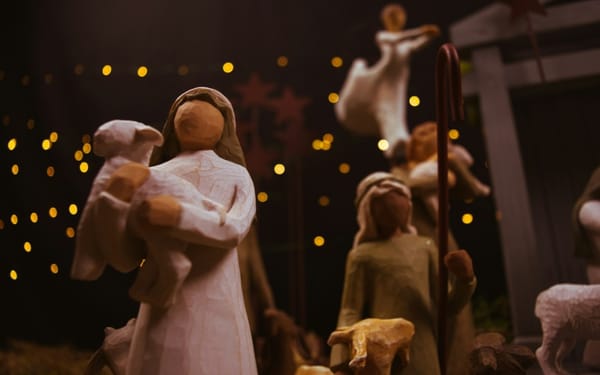The Resurrection Is My Only Hope (Matthew 28, Mark 16, Luke 24, and John 20)
How is the resurrection not just a hopeful event but the only true hope we have on earth?

Matthew 28:1-10; Mark 16:1-11; Luke 24:1-12; John 20:1-18
Today's Scripture Passage
A Few Thoughts to Consider
Do you ever feel hopeless?
Life can be hard, and gradually, we can get beaten down until we lose our joy. Those dreams we once had are gone. The plans we thought were so great now seem foolish. Maybe we’ve lost loved ones or had our hearts ripped out by broken relationships.
No one felt this more than those closest to Jesus after his death. Everything had been going so well. His ministry was changing a nation, and Jesus’ popularity was at its height—but then it all came crashing down. In one day, their security, confidence, and hope for the future were stripped away, leaving in its wake a confused and battered group.
This news especially impacted Mary Magdalene. Mary was a significant follower of Jesus Christ mentioned in the New Testament. Hailing from the town of Magdala on the Sea of Galilee, she was notably healed by Jesus from seven demons, which led to her dedicated discipleship. She was present at critical moments in Jesus' life, including his crucifixion, and she is recognized as the first person to witness and proclaim his resurrection. Three days after Jesus’ death, she is standing outside the tomb, crying. The Greek word klaio means “loud lamentation rather than quiet tears.”[1] John 20 says,
11 As she was crying, she stooped to look into the tomb. 12 She saw two angels in white sitting where Jesus’s body had been lying, one at the head and the other at the feet. 13 They said to her, “Woman, why are you crying?”
“Because they’ve taken away my Lord,” she told them, “and I don’t know where they’ve put him.”
14 Having said this, she turned around and saw Jesus standing there, but she did not know it was Jesus. 15 “Woman,” Jesus said to her, “why are you crying? Who is it that you’re seeking?”
Supposing he was the gardener, she replied, “Sir, if you’ve carried him away, tell me where you’ve put him, and I will take him away.”
16 Jesus said to her, “Mary.”
Turning around, she said to him in Aramaic, “Rabboni!”—which means “Teacher.”
17 “Don’t cling to me,” Jesus told her, “since I have not yet ascended to the Father. But go to my brothers and tell them that I am ascending to my Father and your Father, to my God and your God.”
18 Mary Magdalene went and announced to the disciples, “I have seen the Lord!” And she told them what he had said to her.
As Donald Guthrie writes, “The use of her name by Jesus shows a tender touch.”[2] He isn’t harsh but gently reveals who he is. Should she and the other disciples have anticipated his death and resurrection based on his words? Yes, but when they didn’t, Jesus is gracious—just as he is with us.
Jesus’ appearance to Mary and his disciples helps them see that his resurrection was truly to be the lens through which they saw reality. As N. T. Wright says, “The message of the resurrection is that this world matters! That the injustices and pains of this present world must now be addressed with the news that healing, justice, and love have won.”[3]





